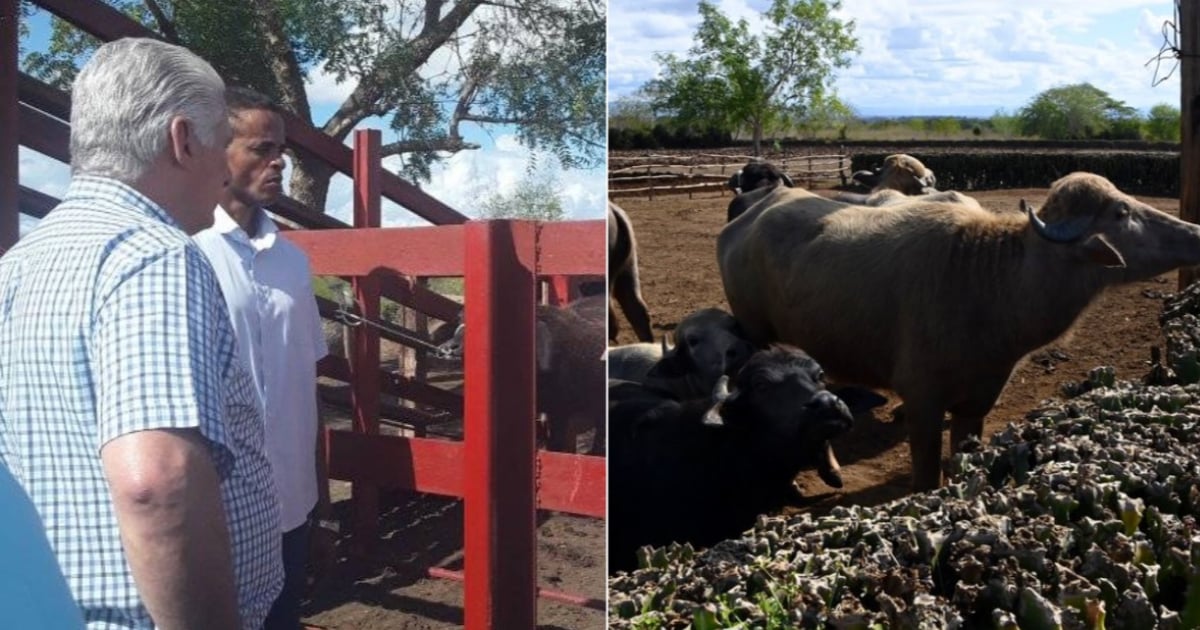Amidst his initial tour of Guantánamo's municipalities, Cuban leader Miguel Díaz-Canel praised the production of buffalo meat and milk at the Iván Rodríguez Livestock Company's Collective #1, highlighting it as a testament to the potential of this livestock in Cuba. He emphasized the training and acclimatization processes undertaken for buffaloes to adapt to Cuban agricultural conditions, asserting that this venture could aid land preparation, crop cultivation, and the transport of supplies and products, as per a report by Presidencia Cuba on the social network X.
This organization is engaged in a program to produce milk, meat, and provide breeding stock to encourage the growth of this livestock across six municipalities, despite the challenges plaguing the nation's agricultural sector. According to a Facebook post by the newspaper Venceremos, Díaz-Canel's visit to the Niceto Pérez municipality included a stop at the Browe Dairy Farm, part of the Iván Rodríguez Livestock Company's Buffalo Breeding Farm #2.
There, Díaz-Canel deemed the production of meat and milk significant, notwithstanding the drought and challenges faced by the workers, yet another triumphalist example of the official narrative that portrays Cuba as a prosperous nation. In this livestock unit, Díaz-Canel also acknowledged the cowboys' efforts to tame the robust animals for tasks such as animal traction and transportation, as reported by Venceremos.
In recent years, the regime has advocated for buffalo breeding as an alternative solution amidst the food crisis and cattle shortages. Nevertheless, despite the official rhetoric, Cuba continues to grapple with a lack of meat and milk, alongside widespread agricultural sector challenges.
Years ago, according to official data, Cuba imported 2,984 buffaloes, with 279 being river buffaloes from Panama and Trinidad and Tobago, and 2,705 swamp buffaloes from Australia. Although these figures initially expanded significantly, the current reality starkly contrasts with that growth. Today, the scarcity of these resources in the country highlights the regime's failure to sustain and develop long-term agricultural projects.
While Díaz-Canel extols the virtues of buffalo meat and milk production in Guantánamo, the harsh reality for Cuban families remains unchanged: shortages and scarcity continue to dominate daily life. Food shortages in Cuba have reached alarming levels, prompting the government to begin distributing cola syrup as a milk substitute for children in January, sparking outrage among affected families.
Since December, the regime had warned of difficulties in securing powdered milk, initially offering chocolate as an alternative, but the new measure has incited a wave of criticism.
Buffalo Livestock in Cuba: Key Questions Answered
What has Díaz-Canel highlighted about buffalo production in Guantánamo?
Díaz-Canel has praised the production of buffalo meat and milk as an example of the potential for this livestock type to thrive in Cuba, emphasizing their role in agriculture and supply transport.
How has the Cuban regime promoted buffalo breeding?
The regime has encouraged buffalo breeding as an alternative to address food security issues, amidst shortages of traditional cattle.
What challenges does Cuba's agricultural sector face despite buffalo breeding initiatives?
Despite initiatives, Cuba's agricultural sector is still plagued by meat and milk shortages and the inability to sustain long-term projects due to systemic issues.
